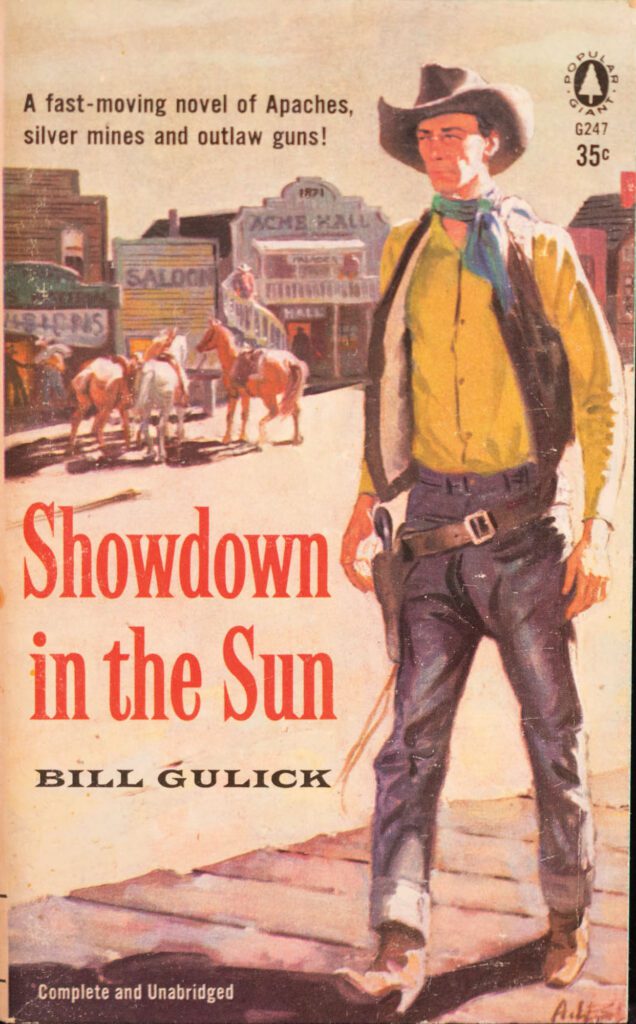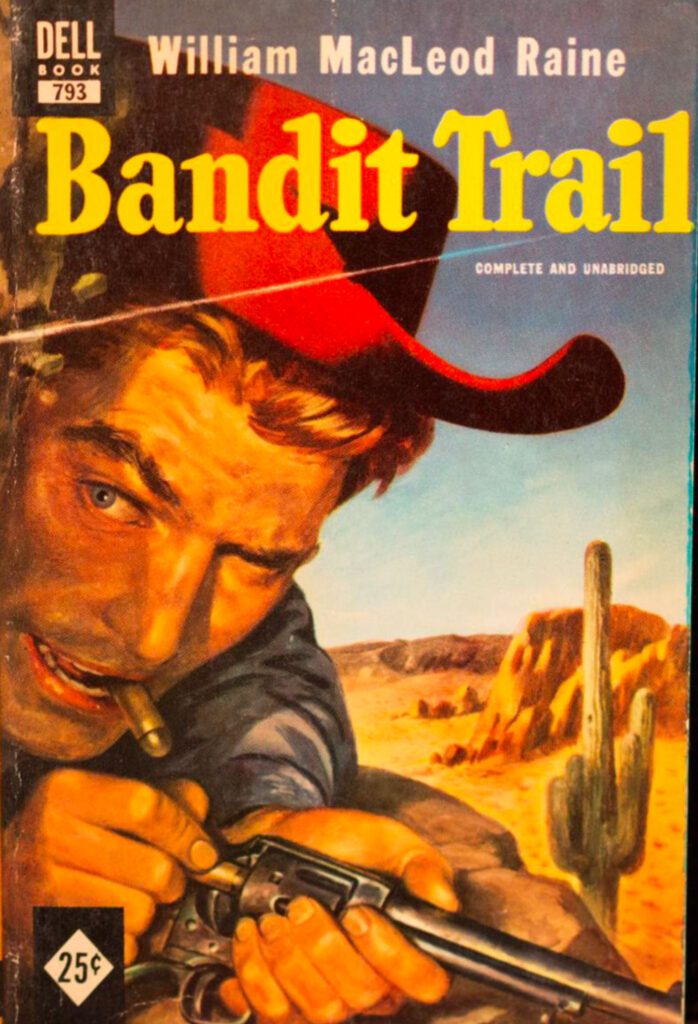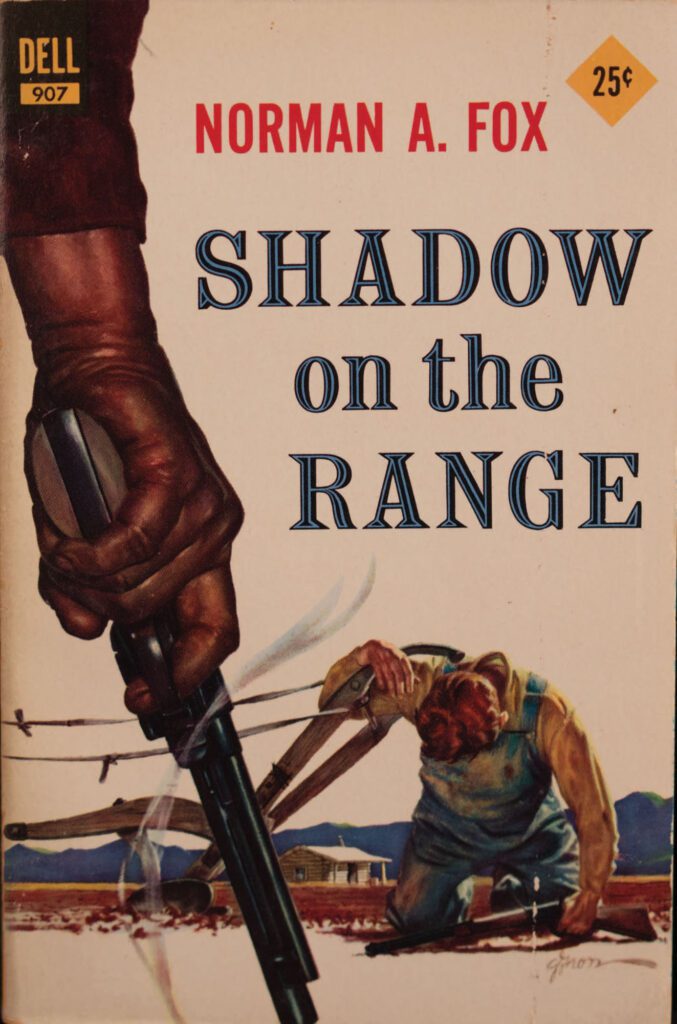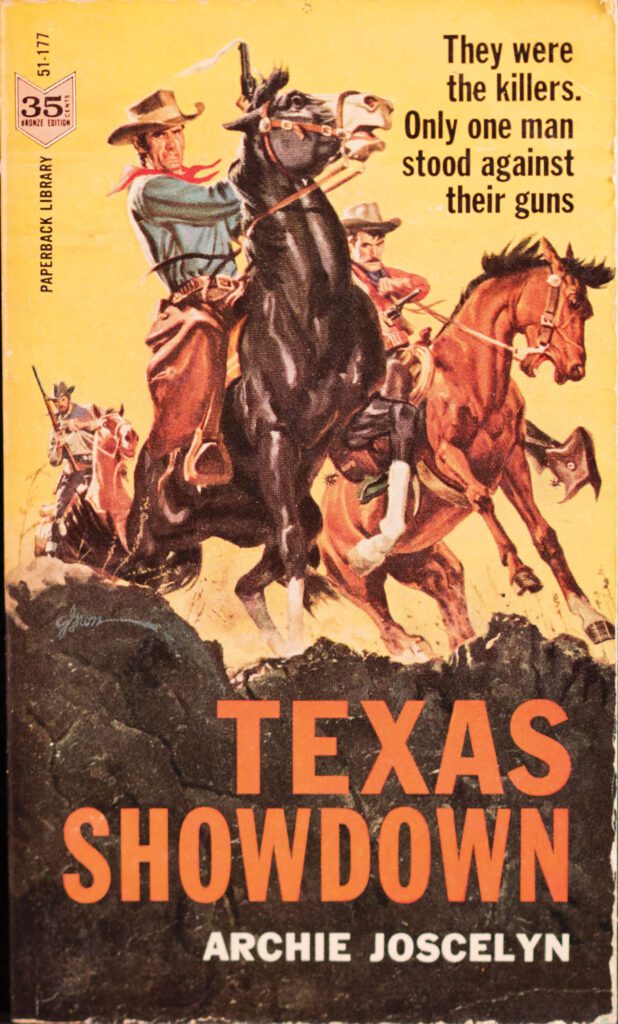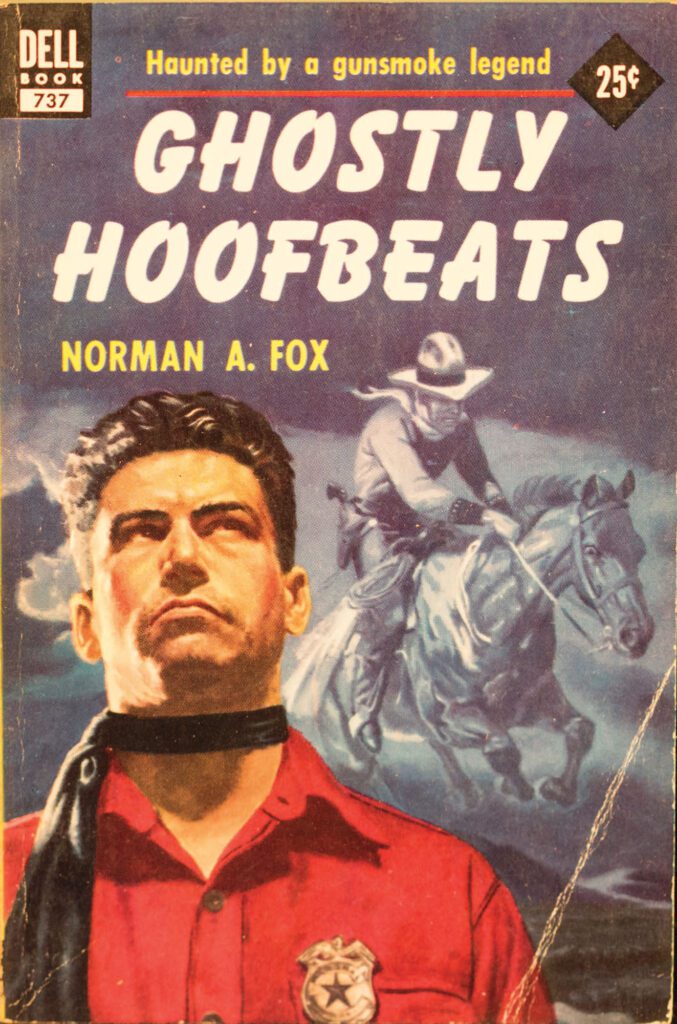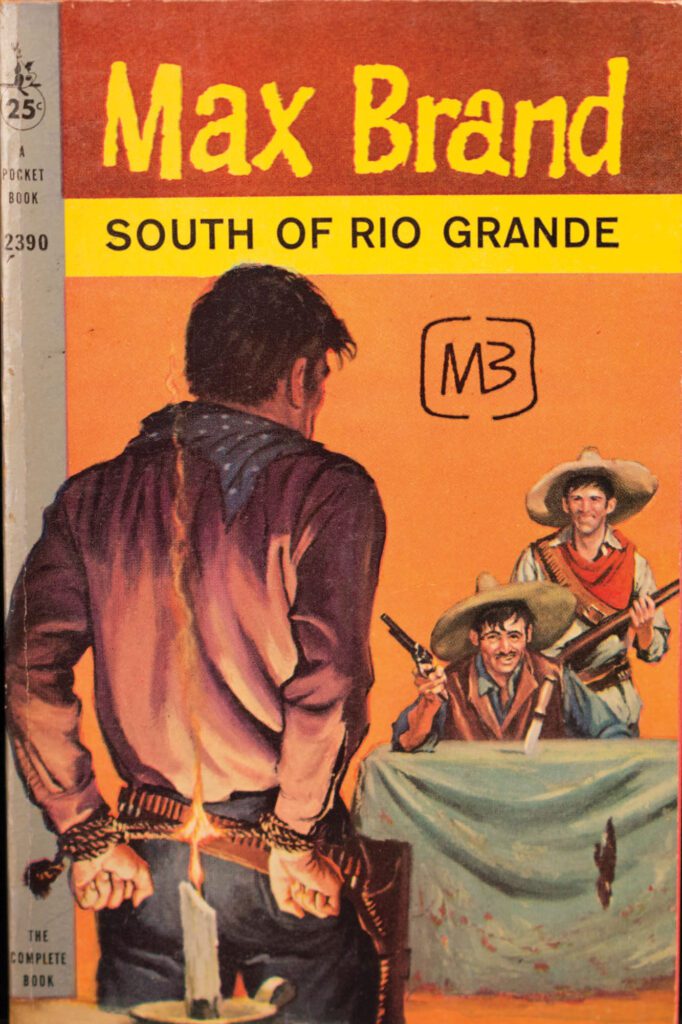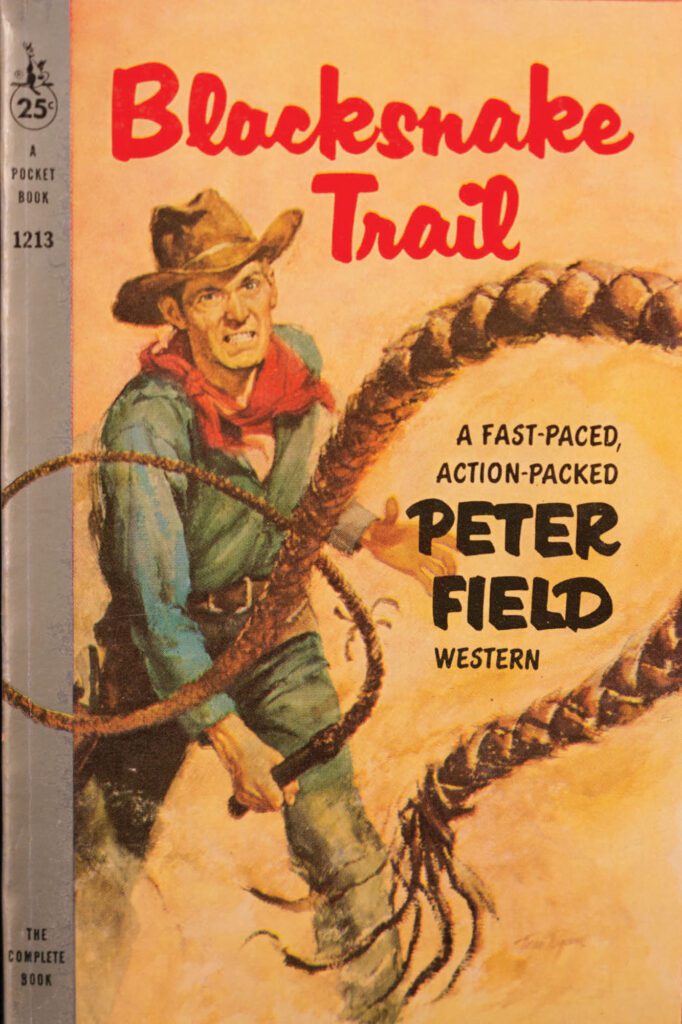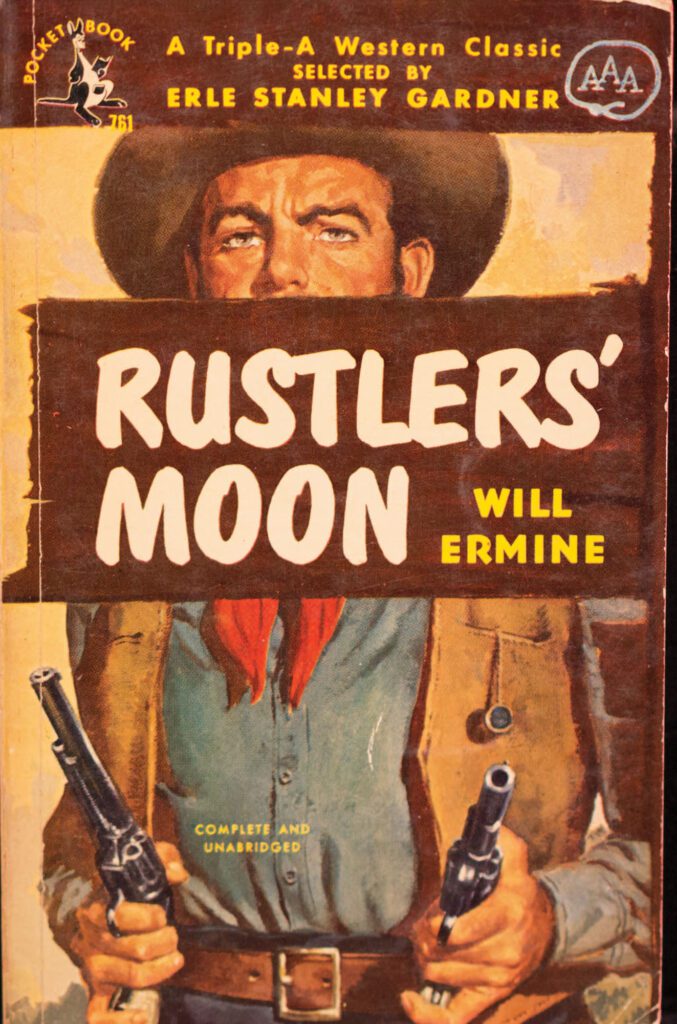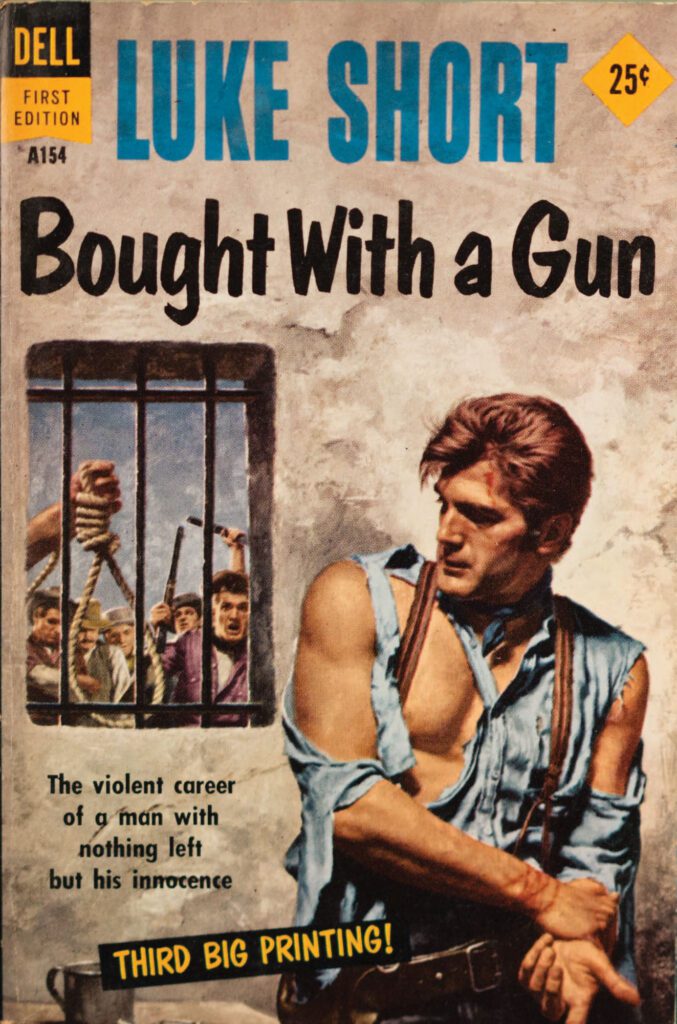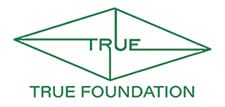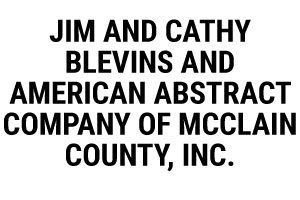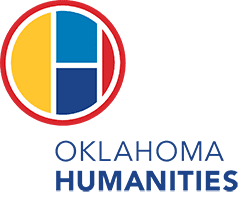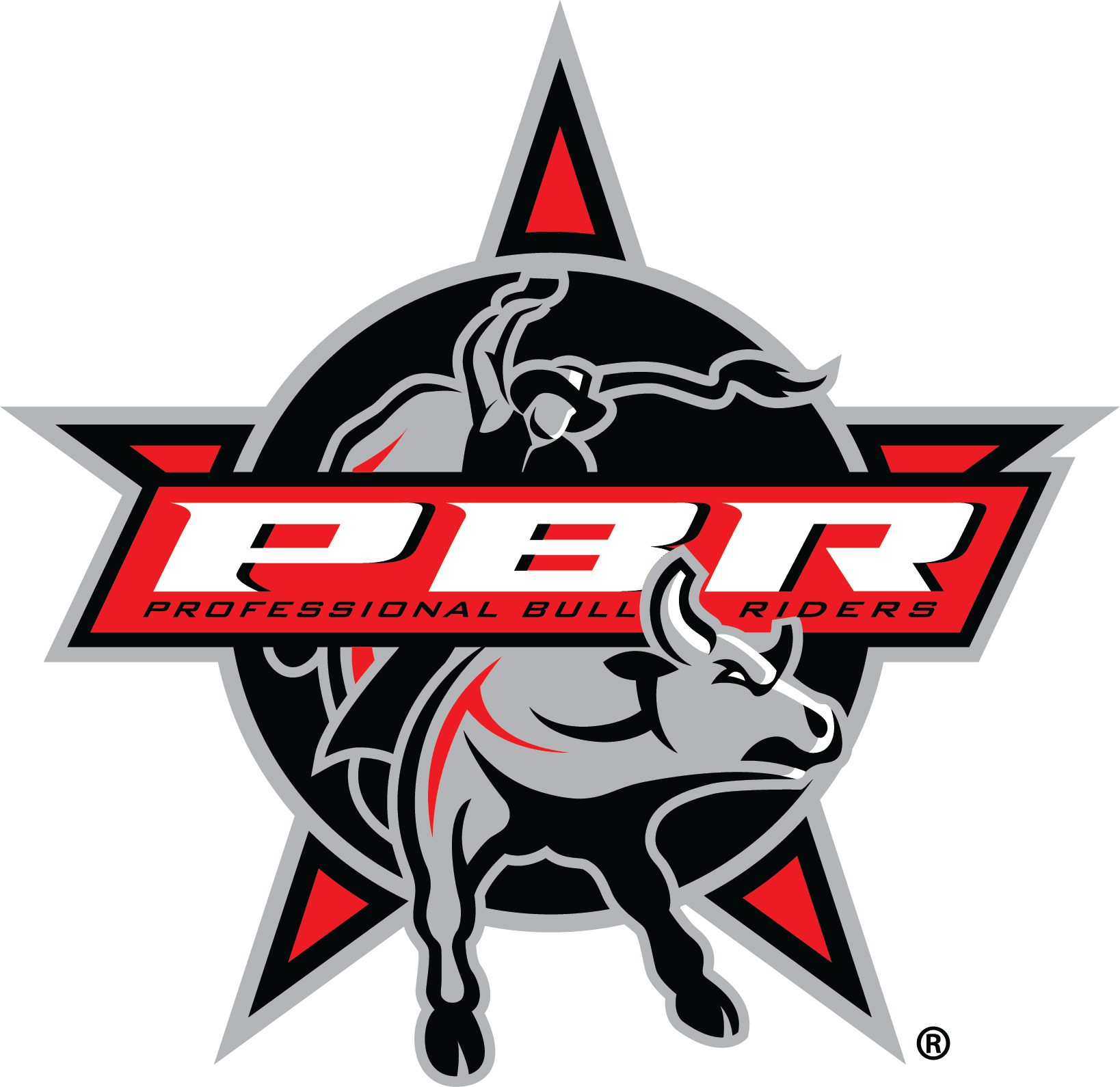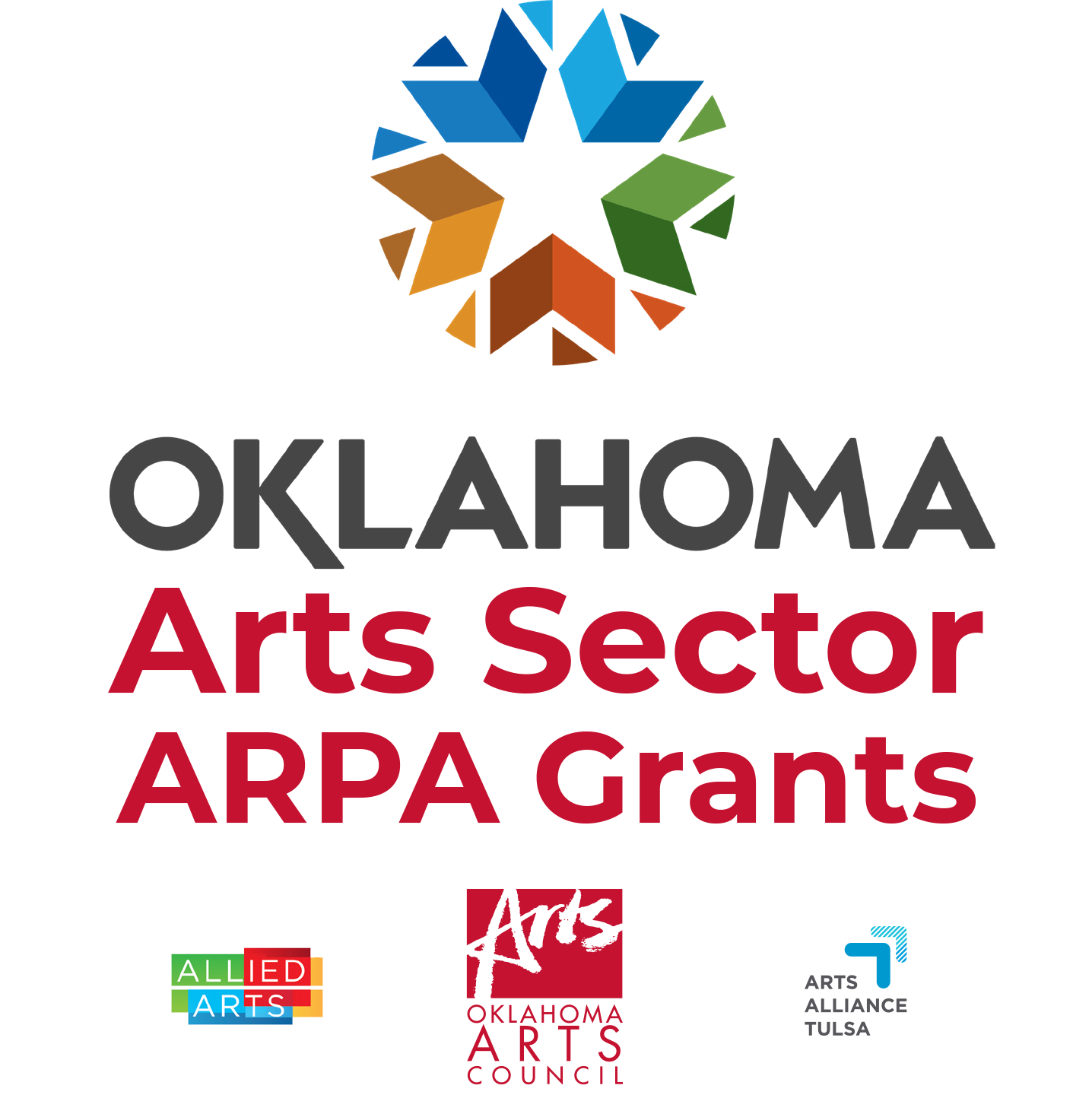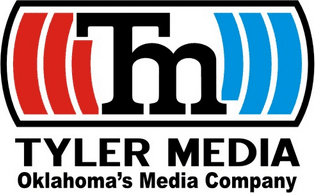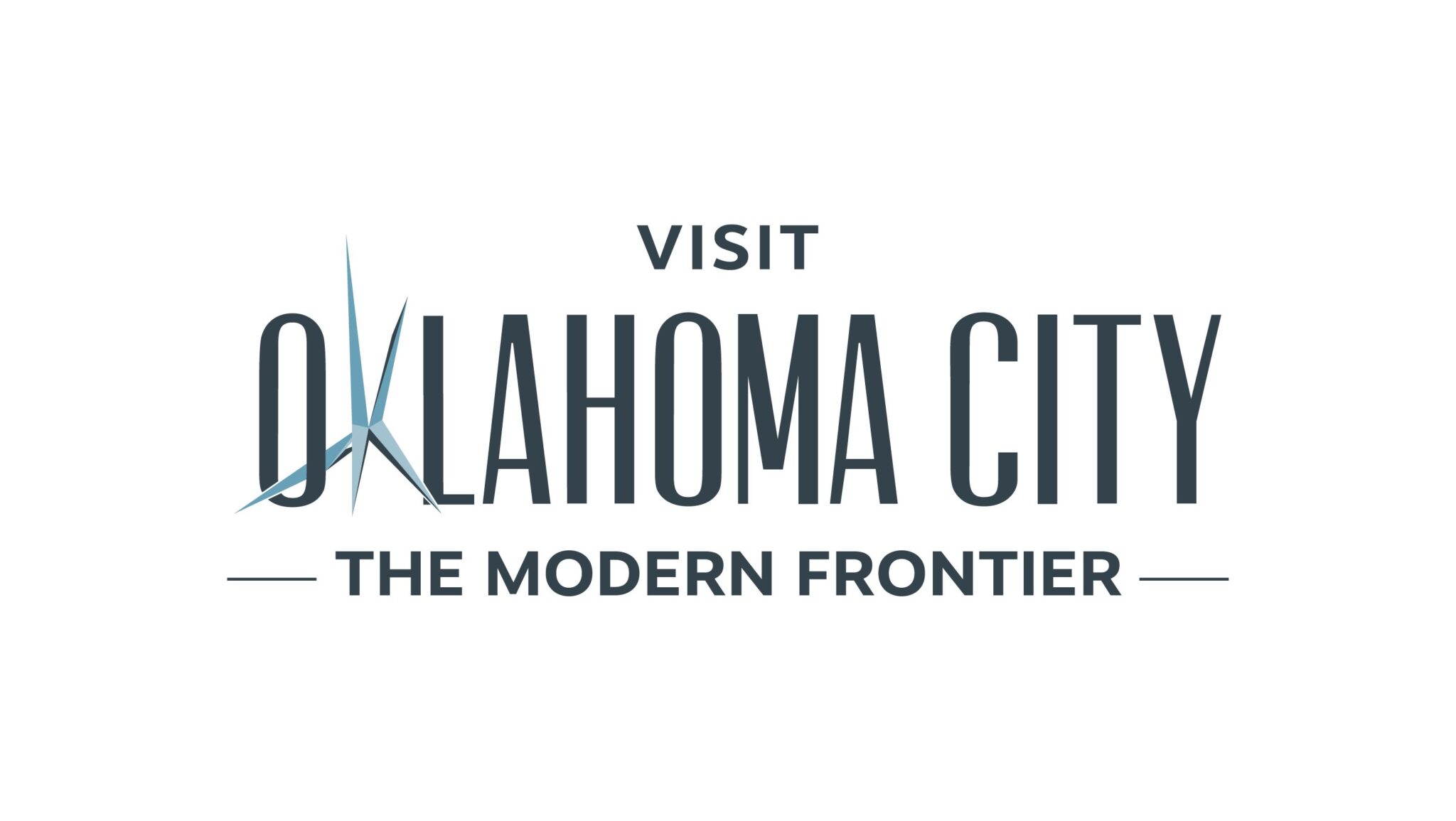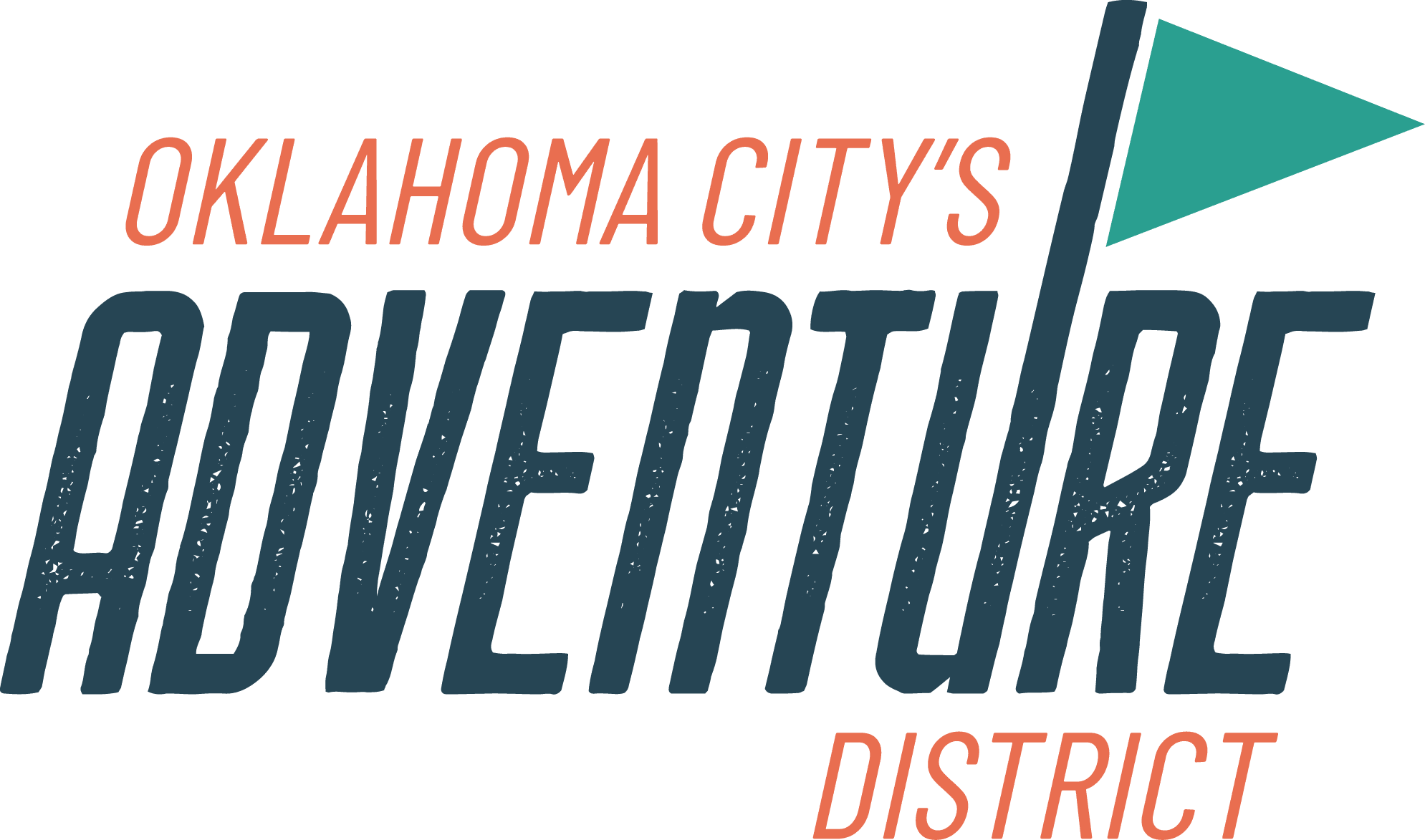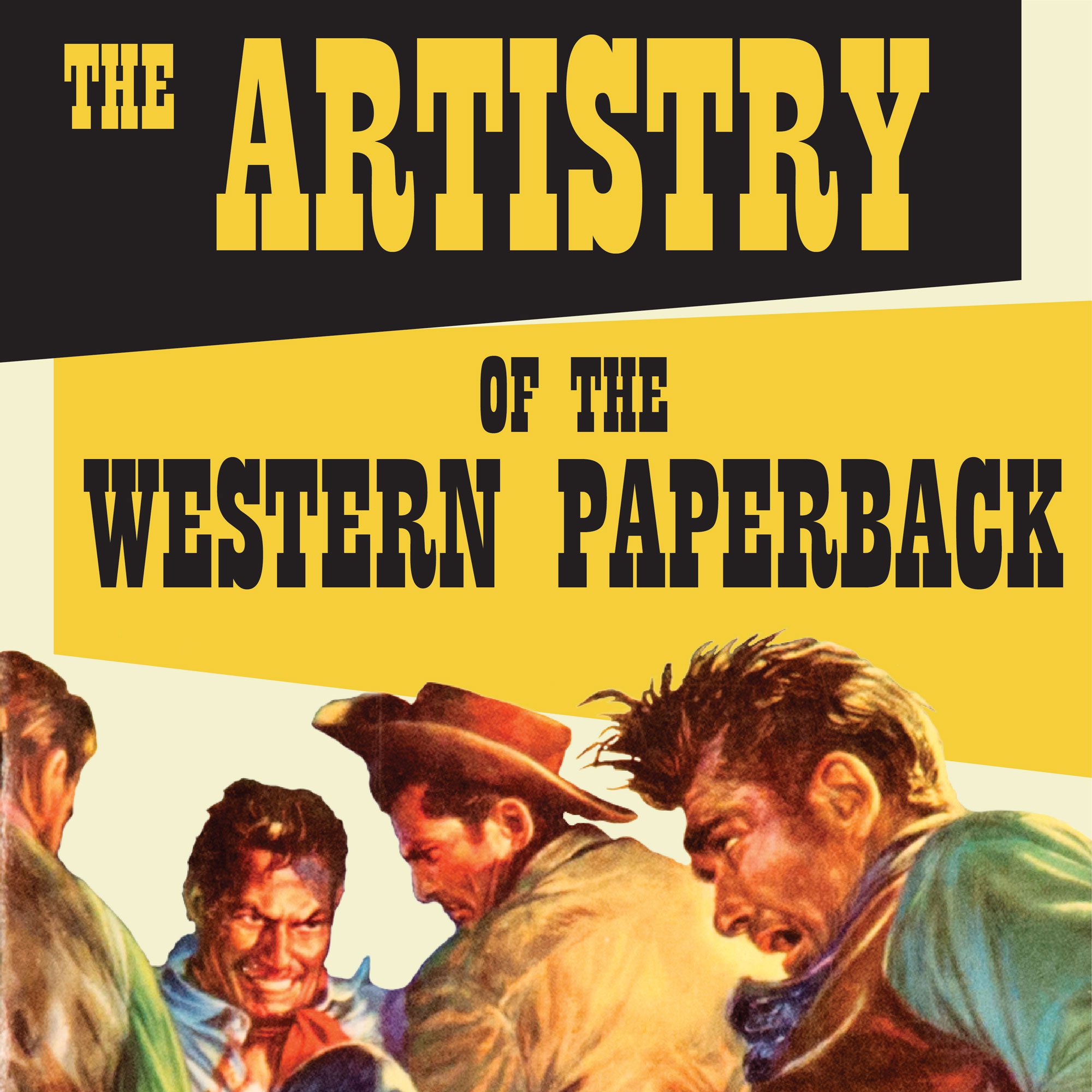
During the 1940s and 1950s, book illustrators created dynamic and engaging paperback covers for western tales of cowboys, villains, duels, and danger. They belonged to a tradition that included Charles M. Russell, Frederic Remington, Philip Goodwin, and other prominent artists. Despite their training and contributions, however, this new generation rarely received recognition or respect for their work. Some critics, including artists, even said its commercial and unrefined nature disqualified it as “true” art. But art is in the eye of the beholder, and the works of A. Leslie Ross, Robert Stanley, George Gross, Tom Ryan, Frank McCarthy, and Stanley Borack deserve a long and thoughtful look.
A. Leslie Ross
A. Leslie Ross was born in 1910 in West Orange, New Jersey and began drawing during summer visits to his aunt’s farm in New York. There he worked with horses and studied their movements. He later attended the New York School of Fine Art and Pratt Institute. His career included freelance work for several movie studios, including Warner Brothers and Paramount Studios, designing teaching aids for U. S. Forces during World War II, and producing over 300 paperback covers during the late 1940s and 50s for several publishers. He worked in oil, gouache, and acrylic, and was known for his skill at depicting horses and action. Ross once said:
Some 15,000 years ago people drew on cave walls. They invented ways of expressing themselves. With a strong desire to express what they felt, they drew without hesitation. Their work carried the conviction of positive thought in expressing a sensation. Their drawing are great because of their delicate sensitiveness and the assurance that reveals how they felt. They are not realistic or abstract, but are pure expressions. If these people were able to create great art, surely you can. The only barrier you have is your mind. You must feel sure of yourself and work with the conviction that you are starting something truthful. Creative work needs a starting point. Not unlike the foundation necessary for a fit life. The same commitments are demanded for both the artist’s picture and the artist’s life. The picture without structure is superficial and empty.
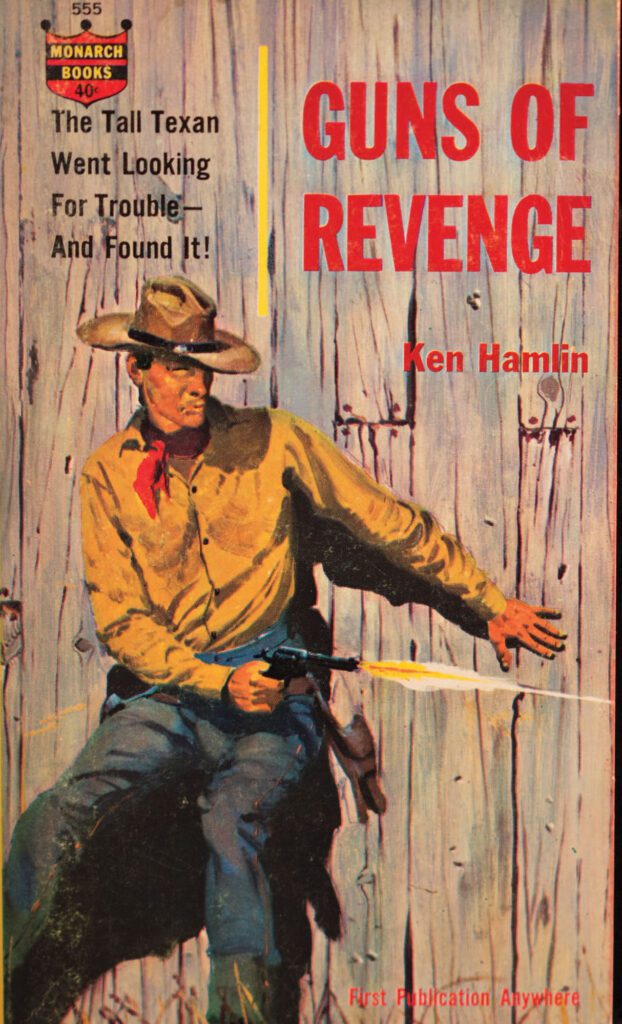
Guns of Revenge, by Ken Hamlin; Monarch Books, Derby, CN; 1965; Glenn D. Shirley Western Americana Collection. RC2006.068.1.07015
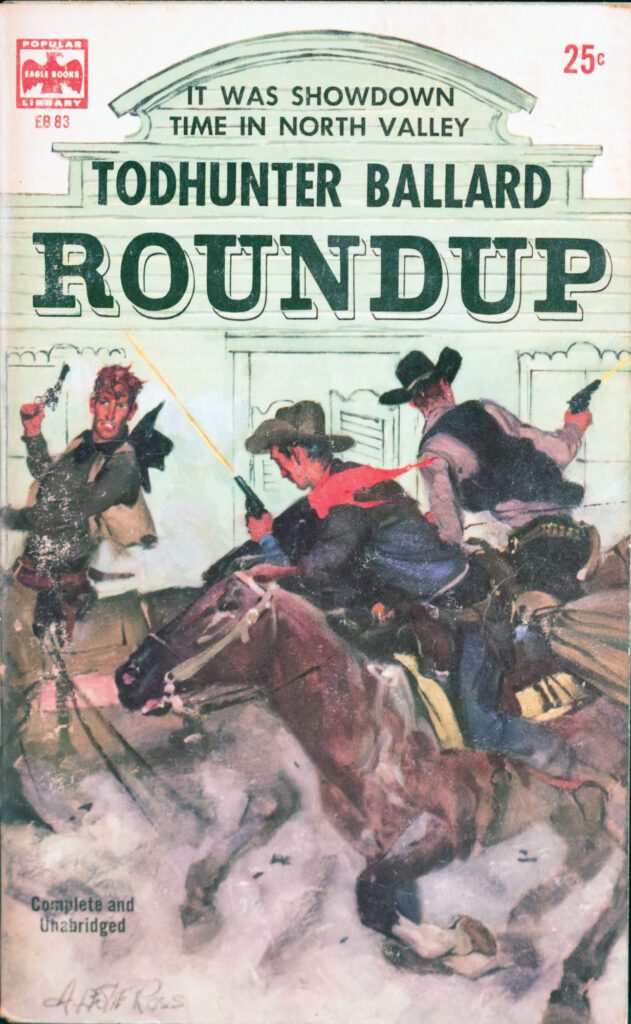
Roundup, by Todhunter Ballard; Popular Library, New York; 1957; Glenn D. Shirley Western Americana Collection. RC2006.068.1.07623
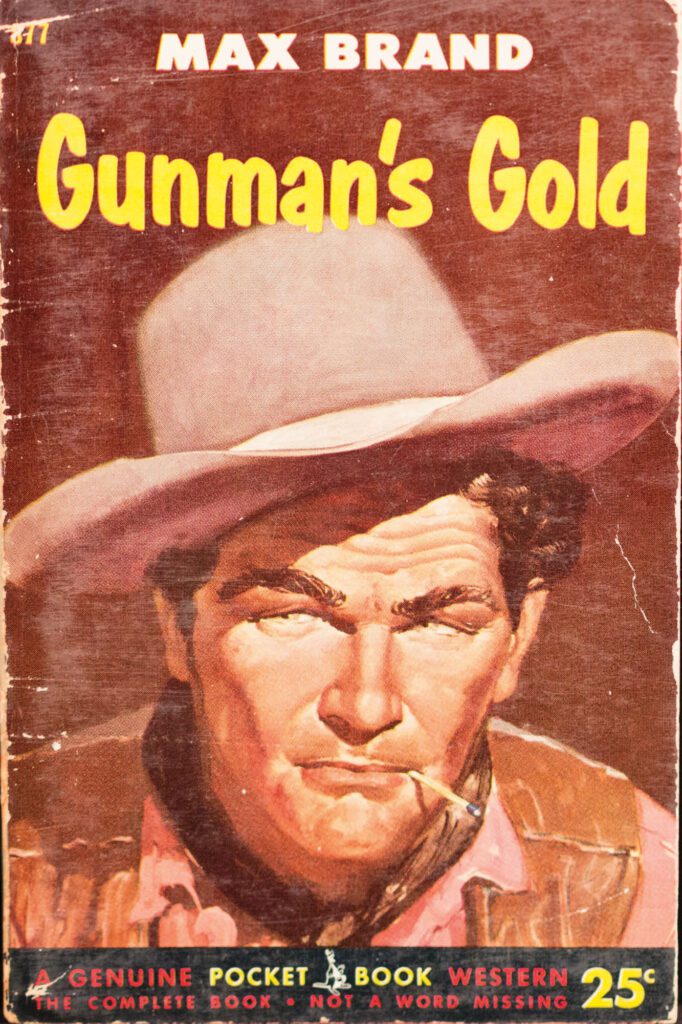
Gunman’s Gold, by Max Brand; Pocket Books, New York; 1952; Glenn D. Shirley Western Americana Collection. RC2006.068.1.06711
Robert Stanley
Born in Wichita, Kansas on March 28, 1918, Robert Stanley began studying art as a young man under the tutelage of his next door neighbor, Claudia Moore. After graduating high school in 1935, he attended one year of college at the Kansas City Art Institute before beginning his career at Standard Magazine. There, he published his first pulp cover for Thrilling Western in 1939. Not earning enough to survive, however, he accepted a position as a draftsman for an architecture firm. After World War II, he once again entered the world of pulp illustrators and produced works for a variety of publishers. From 1950 to 1959, he was a prolific artist for Dell Publishing. His mystery and western covers involved action and a bit of real life inspiration. He often patterned the women after his wife Rhoda and the men after himself.
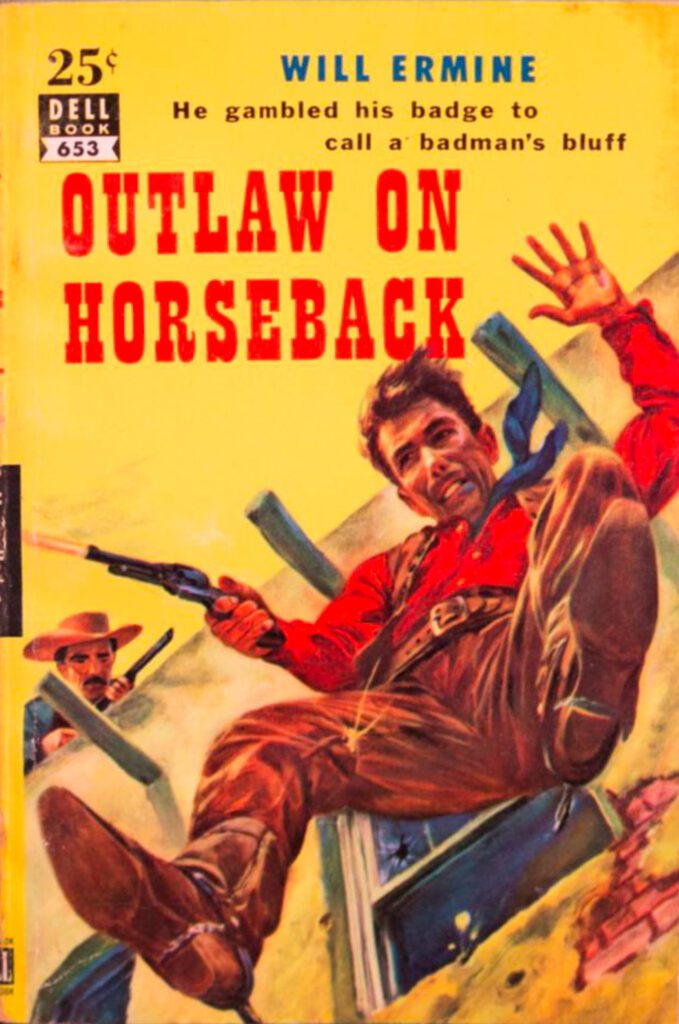
Outlaw on Horseback, by Will Ermine; Dell Publishing, New York; 1946; Glenn D. Shirley Western Americana Collection. RC2006.068.1.07762
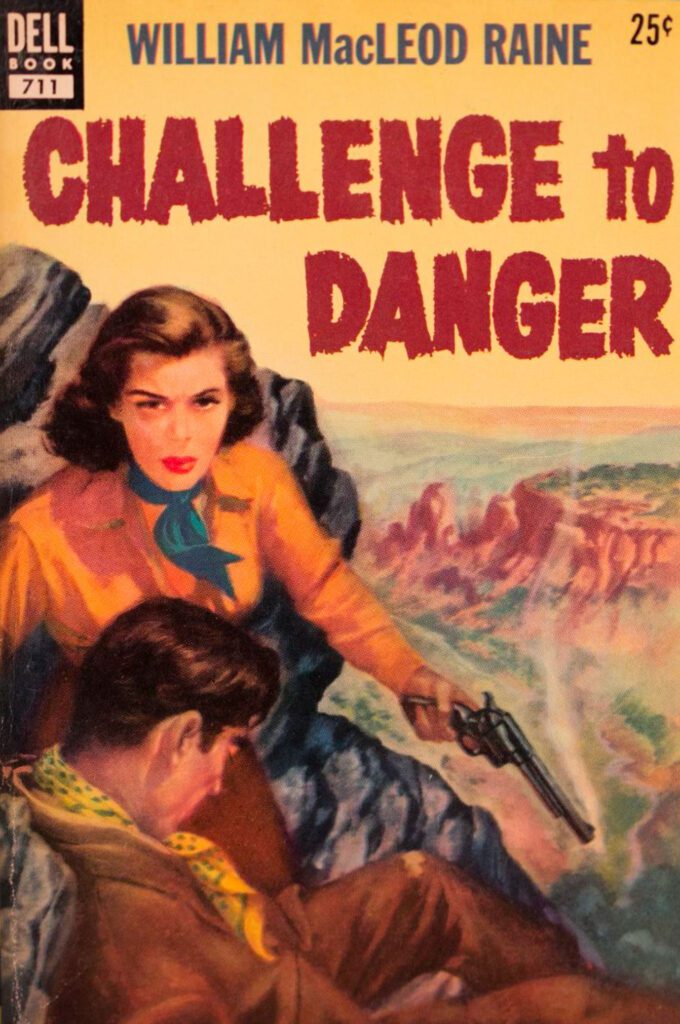
Challenge to Danger, by William MacLeod Raine; Dell Publishing, New York; 1947; Glenn D. Shirley Western Americana Collection. RC2006.068.1.07808
George Gross
Born to Hungarian immigrants in 1909 in Brooklyn, New York, George Gross pursued the same career as his father. After graduating from Pratt Institute in 1931, he joined his father’s business and there developed a practical approach to commercial illustration. After WWII, he worked as a freelance illustrator for a variety of publishers. During his long career, he produced hundreds of pulp covers for Mystery Novels Magazine, Double Action Western, Action Stories, Air Stories, Baseball Stories, Complete Northwest, Detective Book Magazine, Fight Stories, Jungle Stories, North West Romances, and Wings. He also sold covers to several publisher including Dell, Bantam Books, Star Books, and more. In the 1950s, he shared an art studio with Mort Kunstler.
Tom Ryan
Born in 1922 in Springfield, Illinois, Tom Ryan began drawing airplanes at age four with the help of his brother. During World War II he made extra money drawing pictures of fellow servicemen and decided to pursue art as a career after his discharge. He attended the American Academy of Art and later moved to New York City. Creating paintings for nearly 300 paperback book covers, Ryan transitioned into the world of fine western art and became a member of the Cowboy Artists of America in the mid-1960s. He furthered his connection with the National Cowboy & Western Heritage Museum in 1987 when he began participating in the National Academy of Western Art show and sale, now known as Prix de West. The Museum has a number of his works in its permanent collection, including a large example located on the west side of the Museum’s exterior. The Remuda is a moving and exciting three-dimensional tribute to horses and cowboys. He not only drew the American West. As he once revealed, the West also drew him:
An interest in Western history, the ability to draw and paint well, and an outdoor urge for nature’s handiwork and the rugged life, led me on sketching trips in the 1950s to an area of West Texas that was the hunting grounds of the buffalo hunters. I have been painting and enjoying that area ever since then.
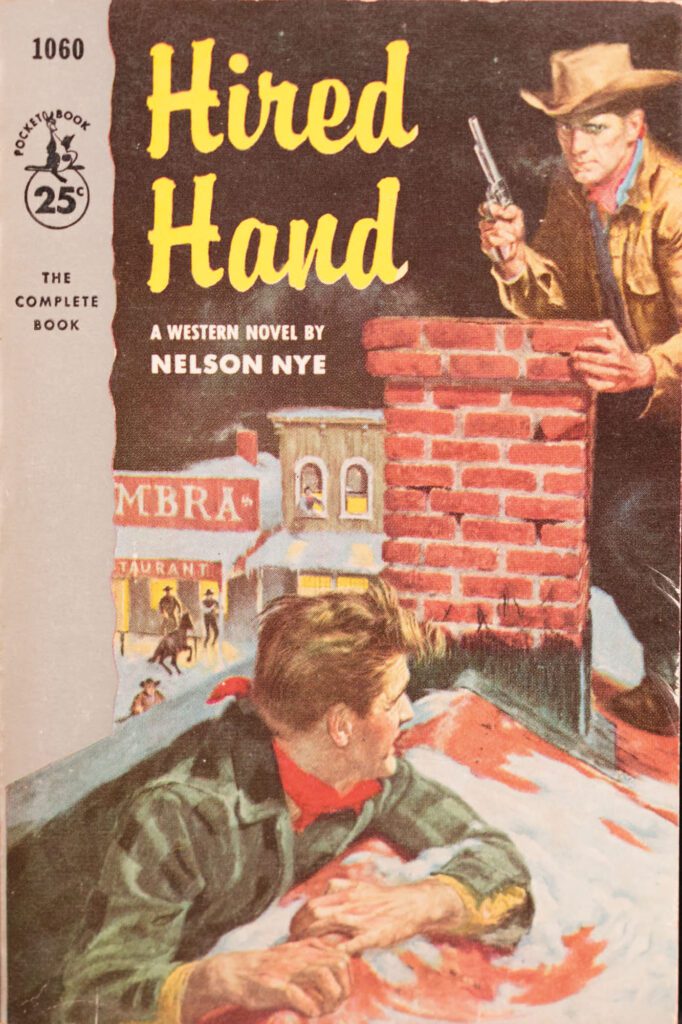
Hired hand, by Nelson Nye; Pocket Books, New York; 1955; Glenn D. Shirley Western Americana Collection. RC2006.068.1.06767
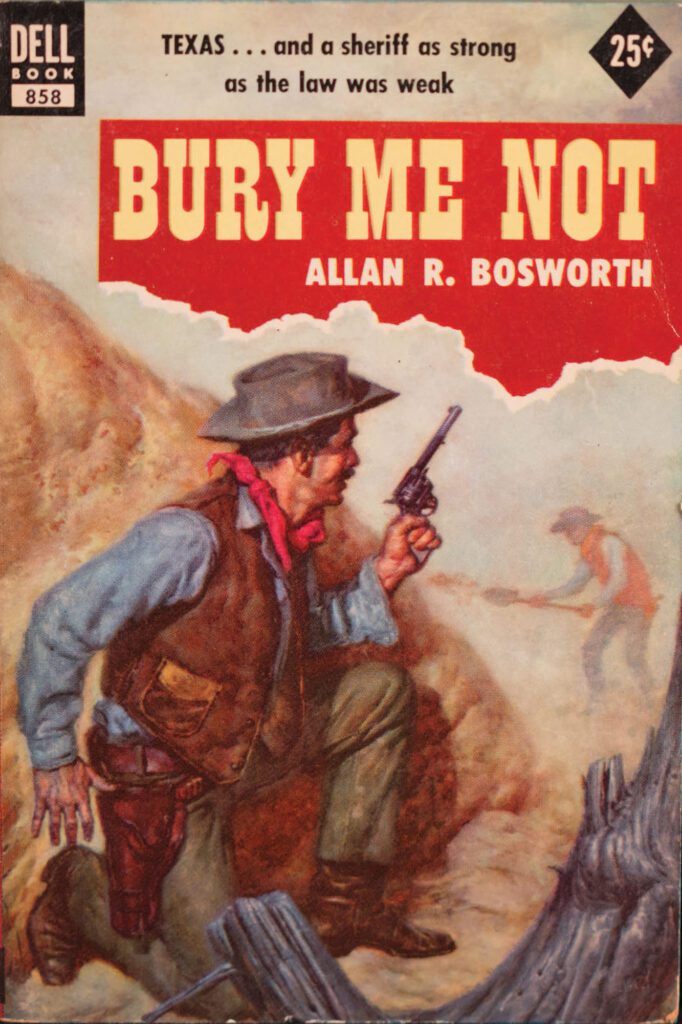
Bury me not, by Allan R. Bosworth; Dell Publishing, New York; 1948; Glenn D. Shirley Western Americana Collection. RC2006.068.1.07802
Frank McCarthy
Born in New York City in 1924, Frank McCarthy began painting when he was five or six years old. His family later moved to Scarsdale, New York, and it was here that he began his art education. He studied at Pratt Institute and the Arts Student League in New York City. For 21 years he created illustrations for several magazines as well as paperback book covers. As his gallery sales increased, however, he left the illustration world in 1968. He had his first major exhibition at Husberg Gallery in Scottsdale, Arizona, in 1973, with 23 paintings selling out in 20 minutes. He joined the Cowboy Artists of America in 1975 and remained an active member for 23 years. He also participated in the National Academy of Western Art sale and exhibition, now known as Prix de West, in 1992 and 1993. Four years later he was inducted into the Society of Illustrators Hall of Fame. Asked about his art, he once said:
Some Western artists document, some do scenery, animals, and portraits of Indians. I paint to achieve a visual impact—trying to redesign the beauty of the West. I put into this setting the characters that roamed it as well as the vehicles that crossed it. My paintings are based on truth and their settings are reality, but the events are not specific.
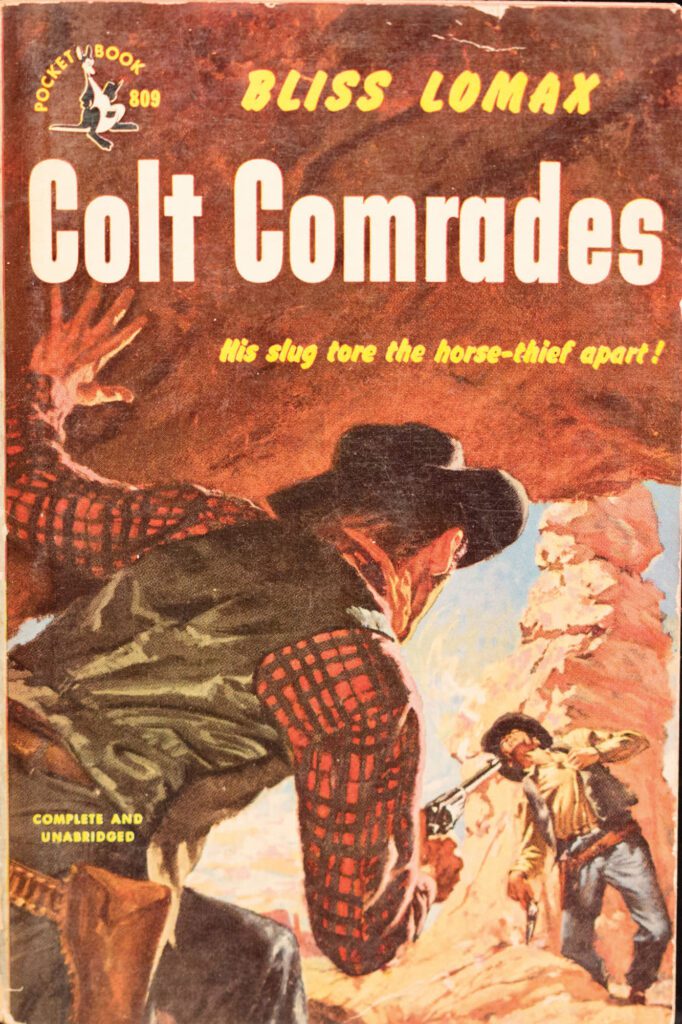
Colt Comrades, by Bliss Lomax; Pocket Books, New York; 1951; Glenn D. Shirley Western Americana Collection. RC2006.068.1.06680
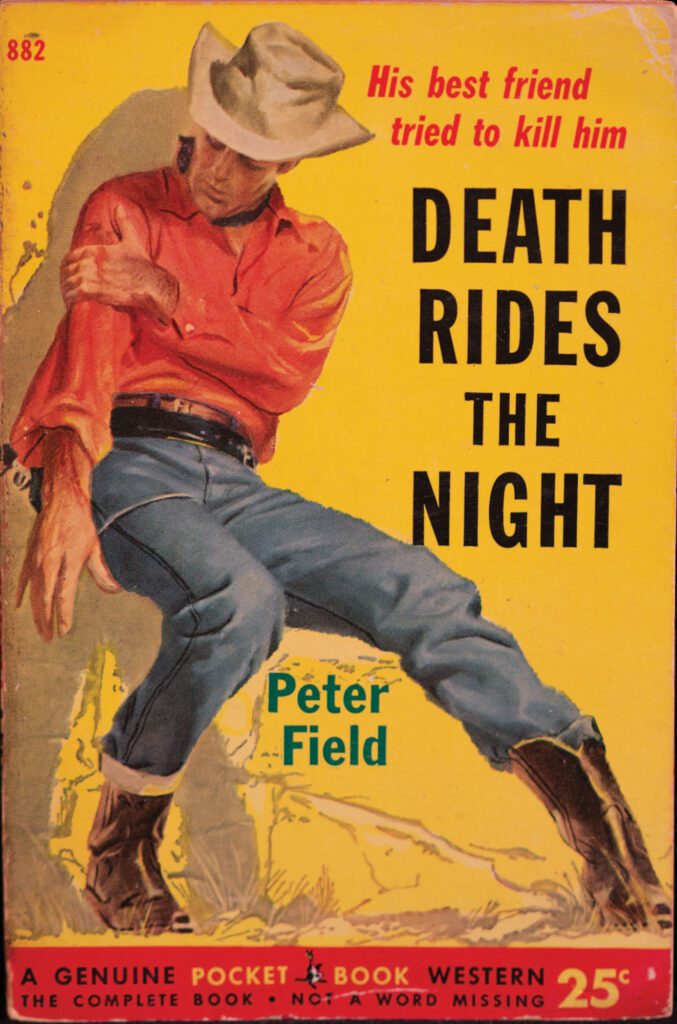
Death Rides the Night, by Peter Field; Pocket Books, New York; 1952; Glenn D. Shirley Western Americana Collection. RC2006.068.1.06716
Stanley Borak
The son of immigrants, Stanley Borack was born in New York City in 1927. Attending the LaGuardia High School of Music and Art, he graduated in 1945 and enrolled in the Art Students League the following year. He stayed for four years and studied almost exclusively under famed artist Frank Reilly, taking 17 of his courses. Borack enjoyed a long career in illustration and worked for a variety of publishers, painting covers for paperback books and pulp magazines. He once said:
I’ve always loved a good Western movie. That period was a classical era in American history with its unique clothing, colorful Indian costumes, and wagons. And, who doesn’t like to look at a good horse in movement? When the Western art market took off, I got into it and left everything behind; I love what I’m doing.
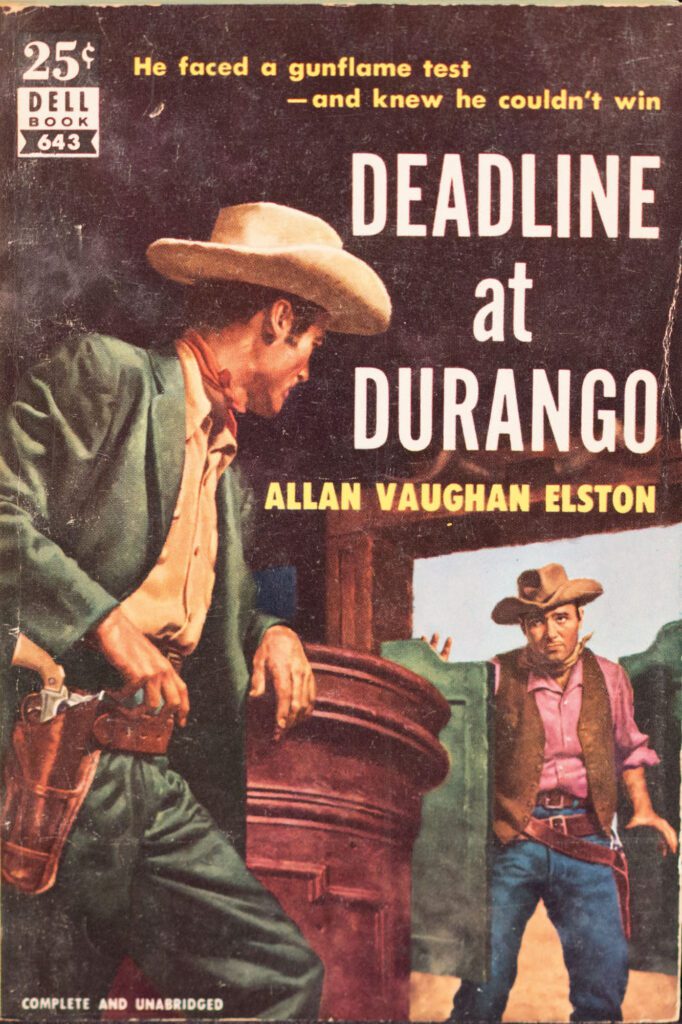
Deadline at Durango, by Allan Vaughan Elston; Dell Publishing, New York; 1950; Glenn D. Shirley Western Americana Collection. RC2006.068.1.07763
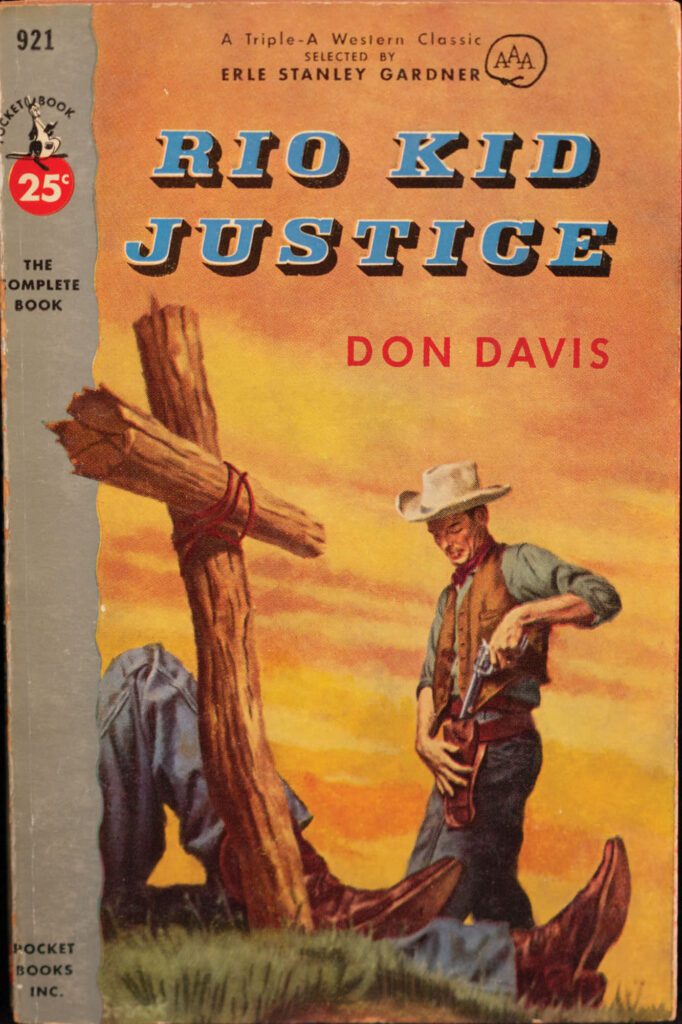
Rio Kid Justice, by Don Davis; Pocket Books, New York; 1953; Glenn D. Shirley Western Americana Collection. RC2006.068.1.06712
Although all six men achieved success in the illustration world, only Ryan and McCarthy are widely known today. They established careers as western painters and became members of the Cowboy Artists of America. Their colleagues, however, remain largely unknown so today we remember Ross, Stanley, Gross, and Borack. Their covers might not have been sold in galleries or taken months to complete, but they are humble testaments to talent and skill. Study their works, judge their covers, and decide: is it art or something else? Does it belong on a bookshelf, on exhibit, or both?
